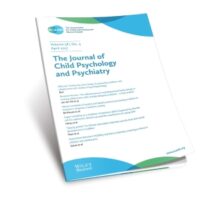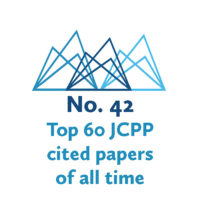Childhood autism
-

Breaking Down Barriers and Improving Understanding – Autism Acceptance Week 2024
This World Autism Acceptance Week (2 April to 8 April 2024), we encourage you to explore the FREE learning opportunities available on our website, and to share with your networks.
Together we can work towards ‘sharing best evidence, improving practice’ to help create a society that works for autistic children and young people.
Read more -

Diagnostic certainty during in-person and telehealth autism evaluations
Open Access paper from JCPP Advances – ‘Differences emerged in the frequency of diagnoses evaluated and made and diagnostic certainty for evaluations conducted via telehealth during the pandemic compared to in person before the pandemic, which likely impacted patients and reflect real-word challenges.’ Natasha N. Ludwig (pic) et al.
Read more -

Oxytocin Administration, Neural Sensitivity, and Autism
In this Papers Podcast, Dr. Matthijs Moerkerke discusses his JCPP paper ‘Can repeated intranasal oxytocin administration affect reduced neural sensitivity towards expressive faces in autism? A randomized controlled trial’. Matthijs is the first author of the paper.
Read more -

Research Review: A systematic review and meta-analysis of sex differences in narrow constructs of restricted and repetitive behaviours and interests in autistic children, adolescents, and adults
Open Access paper from the JCPP – ‘We conducted a systematic review and four random effects meta-analyses investigating sex differences in narrow construct measures of restricted and repetitive behaviours and interests in autistic children, adolescents, and adults’. Hannah Edwards et al.
Read more -

Do autistic girls talk differently about social groups?
New data, published in the Journal of Child Psychology and Psychiatry, suggest that pronoun use during natural conversation might inform us about clinically meaningful social function.
Read more -

Do autistic girls have better communication and interaction skills than autistic boys?
There is ongoing debate as to whether autism spectrum disorder (ASD) differentially affects males and females. Several meta-analyses have found little difference between males and females with ASD in terms of social communication and interaction skills. However, such analyses have often relied on diagnostic instruments such as the Autism Diagnostic Observation Schedule, Second Edition 2 that may not be sensitive to how autism presents in females. What’s more, many have been based on global scores, that reflect overall social communication and interaction skills, which could miss subtler differences in specific domains.
Read more -
Cognitive inflexibility contributes to both externalising and internalising difficulties in ASD
Children with autism spectrum disorder (ASD) commonly experience internalising and externalising symptoms, but the underlying cognitive mechanisms are unclear. In their latest study published in the Journal of Child Psychology and Psychiatry, Ann Ozsivadjian and colleagues examined the role of three cognitive factors that might contribute to these difficulties. Specifically, they hypothesized that intolerance of […]
Read more -

Are autistic behaviours a trait or a state of anorexia nervosa?
Anorexia nervosa (AN) and autism spectrum disorder (ASD) seem to co-occur more frequently than would be expected by chance.1,2 Yet because most studies investigating the nature of this co-occurrence have used a retrospective design, where the data are prone to recall bias, we don’t know whether the elevation of autistic traits in AN is present from childhood or rather from AN onset.
Read more -

Is brain circuitry linked with early symptoms of autism spectrum disorder?
Researchers in San Diego, USA, have studied the relationship between brain network connectivity and emerging autism spectrum disorder (ASD) symptoms in toddlers aged 17-45 months with (n=24) or without (n=23) ASD.
Read more -

Most Cited JCPP Articles #42 of 60
Most cited JCPP papers #42 of 60: Sensory Experiences Questionnaire: discriminating sensory features in young children with autism, developmental delays, and typical development
Read more